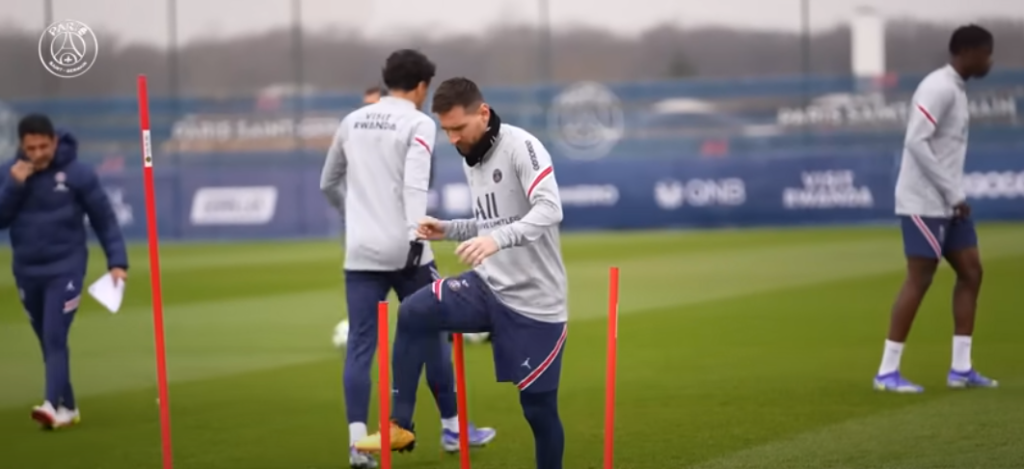Training Routines of Top Football Players

Football is not just a game of skill and tactics; it’s also about stamina, strength, and mental toughness. The world’s best football players follow rigorous training routines to maintain peak physical condition and perform at their best on the field. In this article, we will explore the training routines of top football players, covering several aspects of their preparation, from physical conditioning to diet and mental training.
Physical Conditioning

Strength Training
Strength training is a crucial component of a football player’s routine. It helps build muscle, improve strength, and reduce the risk of injuries. Players often engage in weightlifting exercises, focusing on major muscle groups such as the legs, core, and upper body. Common exercises include squats, deadlifts, bench presses, and lunges. These exercises help players develop explosive power, which is essential for sprints, jumps, and tackles.
Cardiovascular Training
Cardiovascular fitness is vital for football players, as they need to maintain high energy levels throughout a 90-minute match. Players typically engage in various forms of cardio training, such as running, cycling, and swimming. High-intensity interval training (HIIT) is particularly popular, as it mimics the stop-and-start nature of a football match. This involves alternating between periods of intense activity and rest, helping players build stamina and endurance.
Flexibility and Mobility
Flexibility and mobility exercises are important for preventing injuries and improving overall performance. Top players often incorporate yoga and Pilates into their routines to enhance their flexibility, balance, and core strength. Stretching exercises, both dynamic and static, are also performed before and after training sessions to keep muscles loose and ready for action.
Skill Development

Dribbling and Ball Control
Dribbling and ball control are fundamental skills for any football player. Top players spend significant time honing these abilities through various drills and exercises. Cone drills, where players dribble around cones placed in different patterns, help improve agility and ball-handling skills. Juggling exercises also enhance touch and control, allowing players to maintain possession under pressure.
Passing and Shooting
Passing and shooting are essential components of a footballer’s skill set. Players practice different types of passes, including short passes, long balls, and crosses, to ensure accuracy and precision. Shooting drills focus on improving a player’s ability to score from different angles and distances. These drills often include one-on-one situations with goalkeepers, as well as set-piece practice for free kicks and penalties.
Tactical Awareness
Understanding tactics and positioning is crucial for success on the field. Players spend time analyzing match footage and participating in tactical drills to improve their game intelligence. Coaches often simulate match scenarios during training sessions, allowing players to practice their decision-making and positional play in a controlled environment.
Mental Training

Focus and Concentration
Football is a mentally demanding sport, requiring players to stay focused and make quick decisions under pressure. Top players engage in various mental training techniques to enhance their concentration and mental resilience. Visualization exercises, where players mentally rehearse specific situations and plays, help prepare them for different match scenarios. Mindfulness and meditation practices are also common, aiding in stress reduction and mental clarity.
Goal Setting
Setting and achieving goals is a key motivator for football players. Players work with coaches and sports psychologists to set both short-term and long-term goals, such as improving specific skills or achieving personal milestones. Regularly reviewing and adjusting these goals helps players stay motivated and focused on continuous improvement.
Recovery and Nutrition
Rest and Recovery
Rest and recovery are essential for maintaining peak performance and preventing injuries. Top players follow strict recovery protocols, including rest days, ice baths, and massage therapy. Sleep is also a critical component of recovery, with players aiming for 7-9 hours of quality sleep each night to allow their bodies to repair and regenerate.
Nutrition
A well-balanced diet is crucial for fueling a football player’s performance. Players work with nutritionists to develop meal plans that provide the necessary nutrients for energy, muscle repair, and overall health. A typical diet includes a mix of carbohydrates, proteins, and healthy fats, with an emphasis on whole foods such as lean meats, fish, fruits, vegetables, and whole grains. Hydration is equally important, with players ensuring they drink plenty of water throughout the day to stay hydrated.
Conclusion
The training routines of top football players are comprehensive and demanding, covering every aspect of physical, mental, and tactical preparation. By following rigorous strength and conditioning programs, honing their skills, maintaining mental focus, and prioritizing recovery and nutrition, these athletes are able to perform at the highest level. Aspiring footballers can learn from these routines and incorporate similar practices into their own training to improve their game and achieve success on the field.
